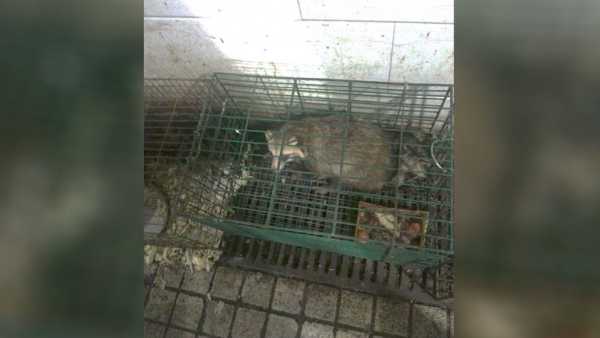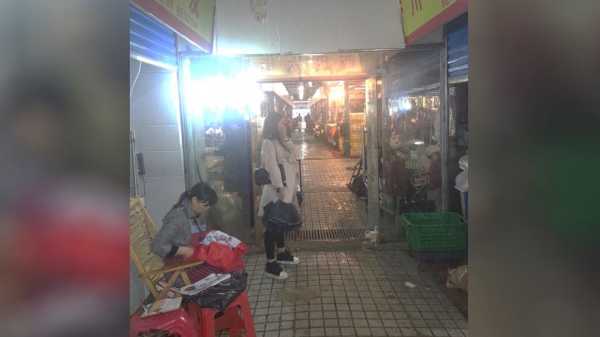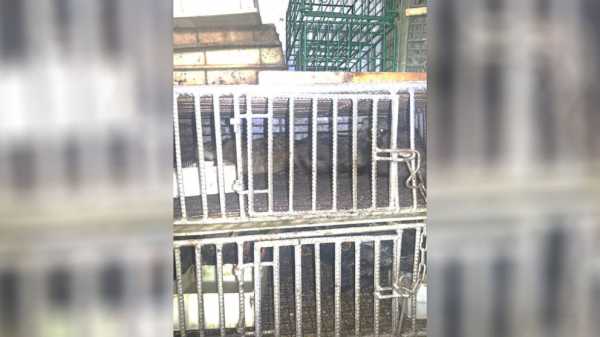Three years after COVID-19 forced the world to shut down, the origins of the virus that has claimed upwards of 7 million lives remains an enduring mystery.
With a lack of definitive proof and as experts hunt for answers, the question remains: Did the COVID-19 pandemic start naturally the way other viruses have developed over the centuries, or did it emerge from an accident at a lab in China?
"Time is running out — and the longer it takes to answer these questions, the more difficult it becomes," Dr. Maria Van Kerkhove, infectious disease epidemiologist and the World Health Organization's COVID-19 technical lead, told ABC News. "We will not stop the pursuit of understanding how this pandemic began, and we will exhaust every avenue until we can rule certain hypotheses out."
Both theories hone in on what is thought to be COVID-19's epicenter — Wuhan, China.

In photos shared exclusively with ABC News, caged raccoon dogs are seen being sold at the Wuhan wet market alongside poultry, rodents and snakes — wildlife found in the same area of the market where positive Covid-19 samples were found in 2020.Edward Holmes
Attention has focused on the long-shuttered stalls of the Huanan Wet Market — where wildlife was sold illegally in possibly dubious sanitary conditions. There, some scientists say, is the most likely place where an animal "spillover" could have occurred and humans could have initially become infected with COVID-19.
But, in recent months, momentum has picked up around an alternative theory, one that suggests the virus — while natural — could have escaped from an accidental research incident at the Wuhan Institute of Virology, renowned for its advanced research on bat coronaviruses, or possibly even another Wuhan lab.
After President Joe Biden tasked the American intelligence community to review everything they could find, America's intelligence and scientific communities remain "divided." Several agencies, including the National Intelligence Council, embrace a natural origin theory with "low confidence." While the FBI and the U.S. Department of Energy believe that COVID "most likely" first emerged through an accidental lab leak with varying degrees of confidence: the Department of Energy, with "low," and the FBI, with "moderate" confidence.
On Monday, Biden signed a bipartisan bill directing the Office of the Director of National Intelligence to declassify as much intelligence as possible about the origins of COVID within the next 90 days, including any "potential links" between research done at the Wuhan Institute of Virology and the pandemic's outbreak.
Meanwhile, new information has continued to percolate and shift the debate.

In photos shared exclusively with ABC News, caged raccoon dogs are seen being sold at the Wuhan wet market alongside poultry, rodents and snakes — wildlife found in the same area of the market where positive Covid-19 samples were found in 2020.Edward Holmes
MORE: What the 'lab leak' theory report about COVID's origins does and doesn't mean
A cache of genetic data taken from swabs at the Wuhan wet market in early 2020 has freshly fueled the natural animal spillover theory, according to a new report from a group of international scientists that has not been peer reviewed.
That analysis, based on partial data initially shared by Chinese CDC scientists on a scientific database, found that multiple samples contained genetic material from the virus that closely intermingled with genetic material from raccoon dogs, an animal most closely related to foxes, which were believed to be illegally traded in that same area of the wet market.
A scientific argument now adds to the international intrigue over whether the team broke the rules in releasing the data themselves, whether CCDC scientists would even collaborate — and questions over why the data had not been released sooner.
The WHO recently criticized Beijing for not releasing the data sooner, with WHO Director-General Tedros Adhanom Ghebreyesus saying, it "could have – and should have – been shared three years ago."
Images taken in 2014, shared exclusively with ABC News, capture photos of raccoon dogs in cages at the Wuhan Wet Market, alongside poultry, rodents and snakes — found in the same area of the market where positive samples of COVID-19 would be found in 2020.
"What we have here is evidence from the actual time and place where we think the pandemic started, in the form of swabs from surfaces, things like cages, carts used to move animals, a feather or hair remover," Dr. Michael Worobey, head of the Department of Ecology and Evolutionary Biology at the University of Arizona who helped lead the research, told ABC News.
"They're loaded with the DNA of the animals that we think may have been the intermediate hosts of this virus that moved it between bats and humans in Wuhan and, in fact, ignited the pandemic there," he said.
But, with no actual specimens to test since the market was shut down and the animals cleared out before they could be tested in 2020, the evidence remains purely circumstantial.
"Unfortunately, not a single relevant live mammal like a raccoon dog, or a civet, actually was there by the time the China CDC went to take samples. So we're never going to have that," Worobey said. "What we do have, is a tremendously rich amount of intersecting evidence that all points to this one place at one time."
"Why would this start at a place that has all of these ingredients that we know start pandemics?" Worobey said. "Why the place that sells the raccoon dogs?"
However, other experts suggest that this circumstantial evidence tilts the scales in favor of an accidental research-related incident.
"There is no smoking gun proving a laboratory hypothesis, but the growing body of circumstantial evidence suggests a gun is, at very least, warm to the touch," Jamie Metzl, biosecurity and technology expert and former advisor to the World Health Organization, told ABC News.
Metzl was one of the first witnesses called to testify before Congress on the origins investigation and has called for a more full and unfettered investigation into where the virus came from.

In photos shared exclusively with ABC News, caged raccoon dogs are seen being sold at the Wuhan wet market alongside poultry, rodents and snakes — wildlife found in the same area of the market where positive Covid-19 samples were found in 2020.Edward Holmes
MORE: 'American Catastrophe: How Did We Get Here?': 5 key takeaways
One of the scientists spearheading this bat coronavirus work at the Wuhan Institute of Virology, Dr, Shi Zhengli, has denied that COVID-19 could have emerged from her lab — as has the Chinese government — even as supporters of the lab leak theory like Metzl resist trusting Shi or Beijing's "unverified word."
ABC News reached out to Professor Shi about her previous and current work but she has not yet responded.
However, many experts agree that Beijing's stonewalling and failure to fully share raw data has stymied progress and forced the debate to a staunch stalemate.
The Chinese Foreign Ministry, in response to an inquiry from ABC News, said, "China has shared the most data and research results and made the greatest contribution to global origin-tracing research. It is the common responsibility of all countries in the world to find the source of the novel coronavirus. At present, the main reason why the origin-tracing research is hindered is the political manipulation of the United States."
But, with the clock ticking to find where COVID originated, the hunt for where and how it began has also become a race to prevent the next pandemic — which experts warn is not a matter of "if" it hits, but "when."
"If we want to prevent this type of catastrophic event from happening again, we need to understand the root causes of this emergence, and what can we do to mitigate those conditions from happening again," James Lawler, Infectious Disease Professor at the University of Nebraska Medical Center, told ABC News.
Hunting down how this pandemic began is a global "responsibility," Van Kerkhove said. "All of these pathogens with pandemic and epidemic potential … The next disease X is out there."
Said Van Kerkhove: "It's absolutely fundamental that we do so to understand, to be better prepared for the future, to prevent this from happening again to the best of our ability — because this will happen again."
Sourse: abcnews.go.com






